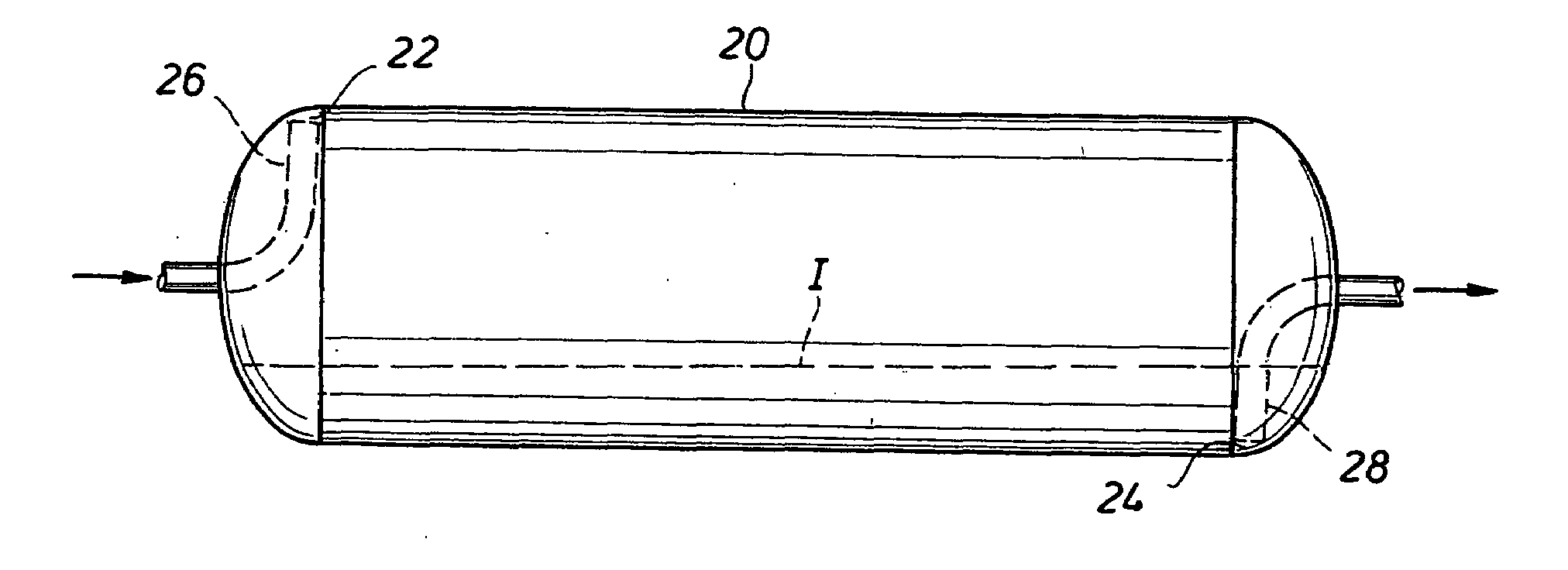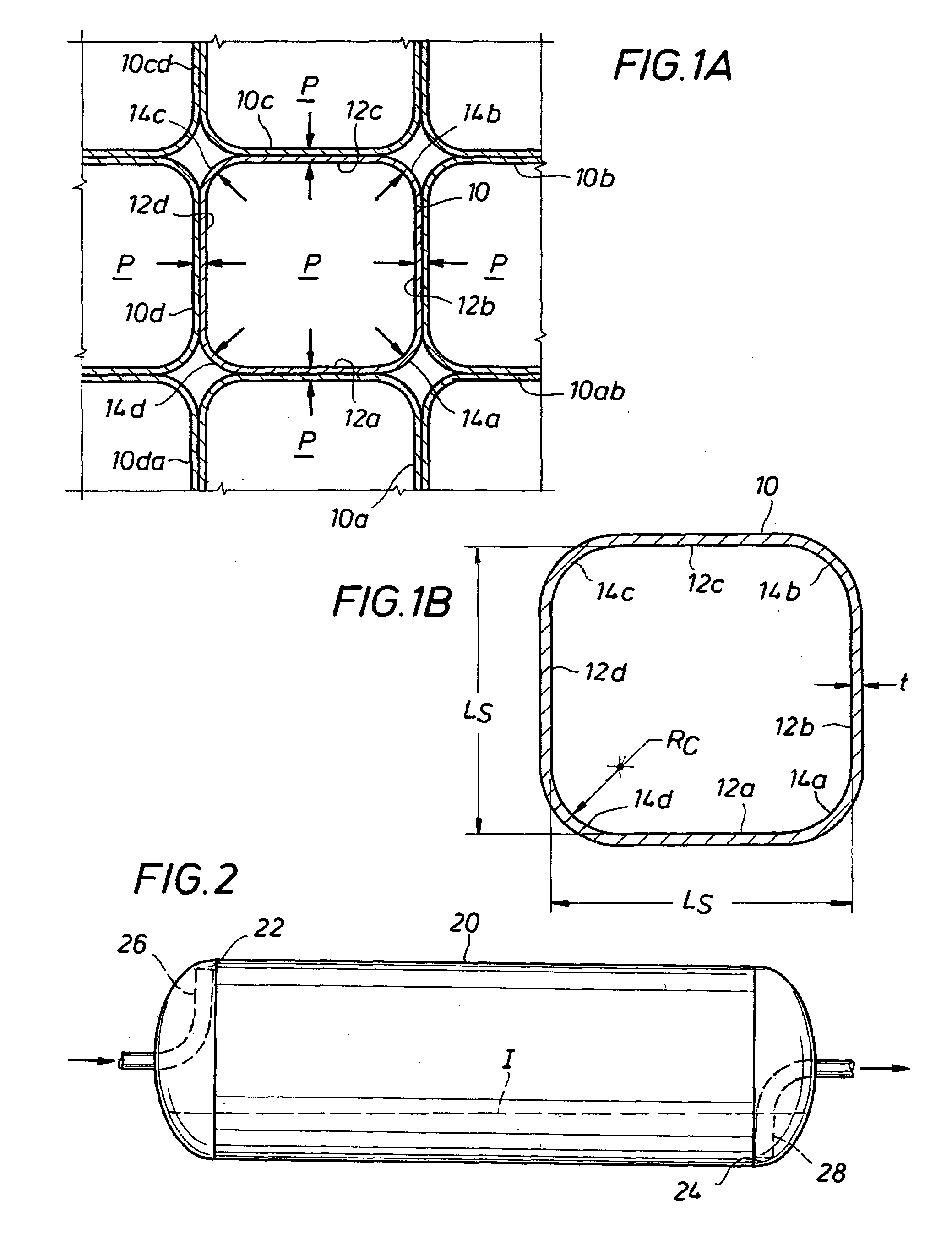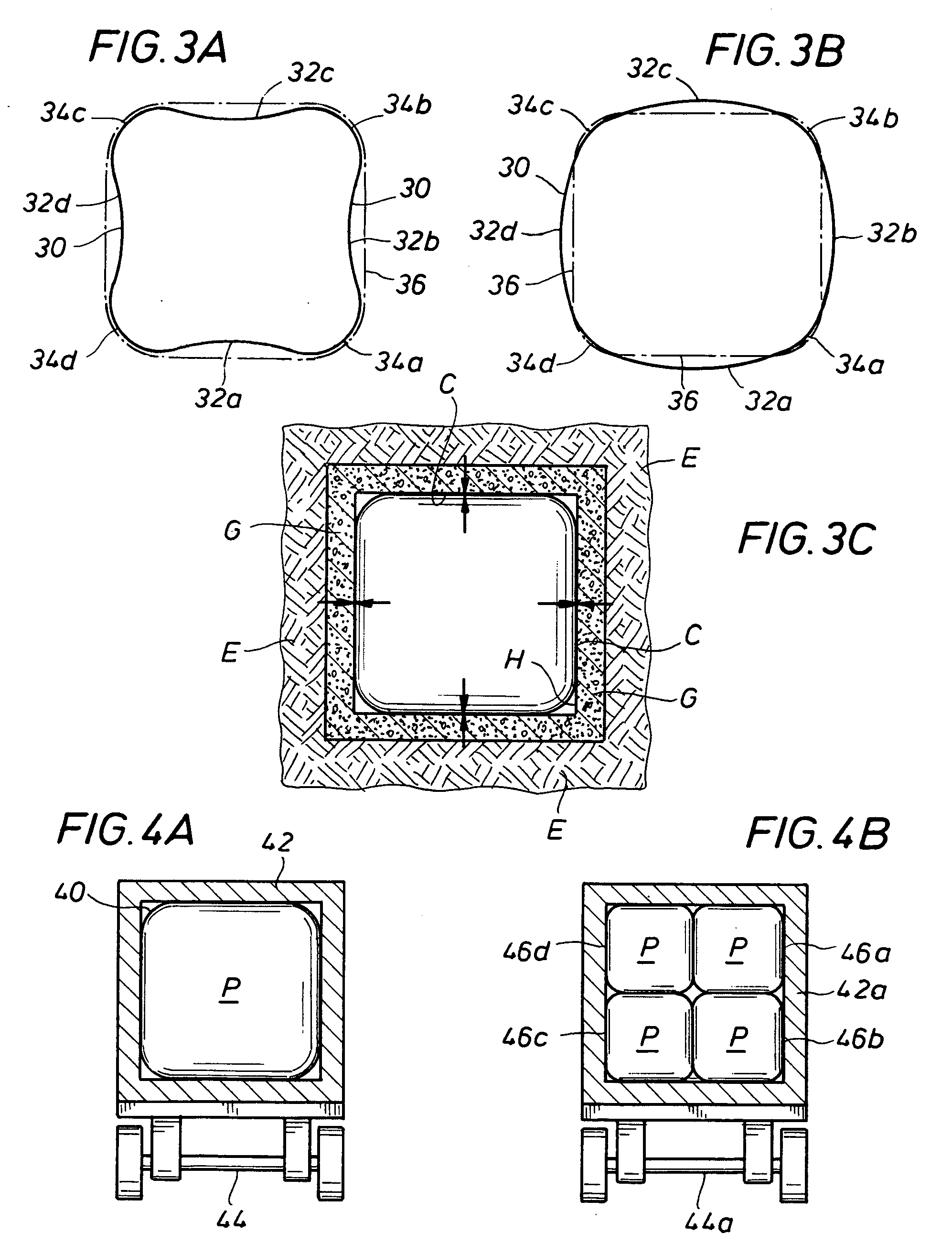Storing, transporting and handling compressed fluids
a technology of compressed fluid and storage container, which is applied in the direction of liquid transfer device, container discharging method, manufacturing tools, etc., can solve the problems of high cost, limited effective strength of materials used to fabricate these essentially rigid containers, and high cost of steel cylinder/pipeline gas storage containers discussed in prior art. , to achieve the effect of low heel
- Summary
- Abstract
- Description
- Claims
- Application Information
AI Technical Summary
Benefits of technology
Problems solved by technology
Method used
Image
Examples
Embodiment Construction
[0067]Storing and Transporting Natural Gas
[0068]The present invention provides innovative forms of containment for storage and / or transport of fluids, such as natural gas and / or natural gas liquids, as well as innovative means for loading to and discharging from stationary or transportable cargo containers. Highly efficient cargo container design and utilization of available cargo hold spaces within the means of transport can be achieved with the present invention. Cargo containers according to the present invention rely on external support to complement the structural capacity of the container itself. Cargo fluids are stored at very low temperatures and low-to-moderate pressures within the cargo containers. The cargo containers are designed to have polygonal bodies and are shaped such that their structural capacity to contain cold, pressurized cargo fluid normally depends on the support of adjacent containers and / or on the support of walls that define a cargo hold space.
[0069]A car...
PUM
| Property | Measurement | Unit |
|---|---|---|
| temperature | aaaaa | aaaaa |
| pressure | aaaaa | aaaaa |
| atmospheric pressure | aaaaa | aaaaa |
Abstract
Description
Claims
Application Information
 Login to View More
Login to View More - R&D
- Intellectual Property
- Life Sciences
- Materials
- Tech Scout
- Unparalleled Data Quality
- Higher Quality Content
- 60% Fewer Hallucinations
Browse by: Latest US Patents, China's latest patents, Technical Efficacy Thesaurus, Application Domain, Technology Topic, Popular Technical Reports.
© 2025 PatSnap. All rights reserved.Legal|Privacy policy|Modern Slavery Act Transparency Statement|Sitemap|About US| Contact US: help@patsnap.com



